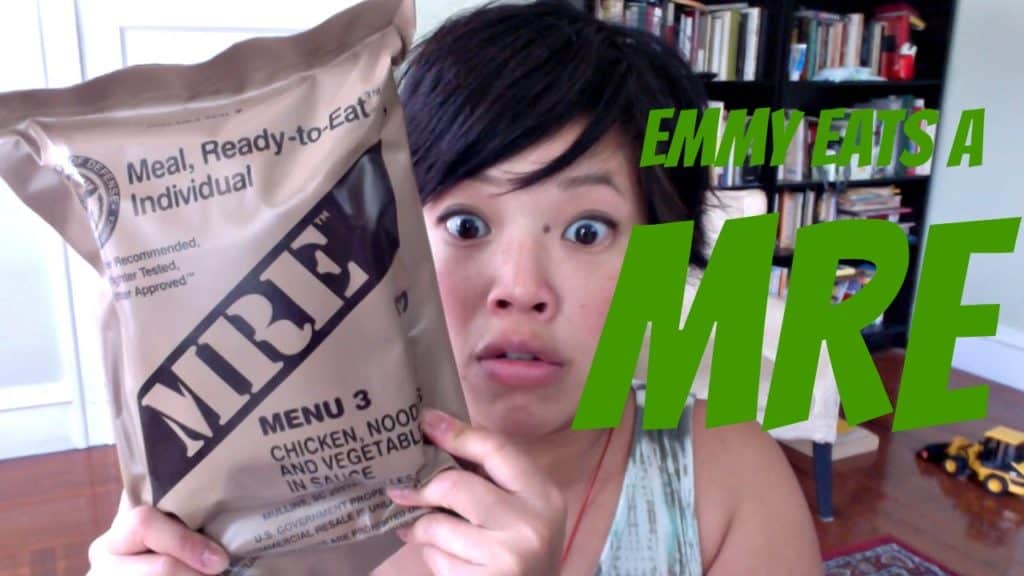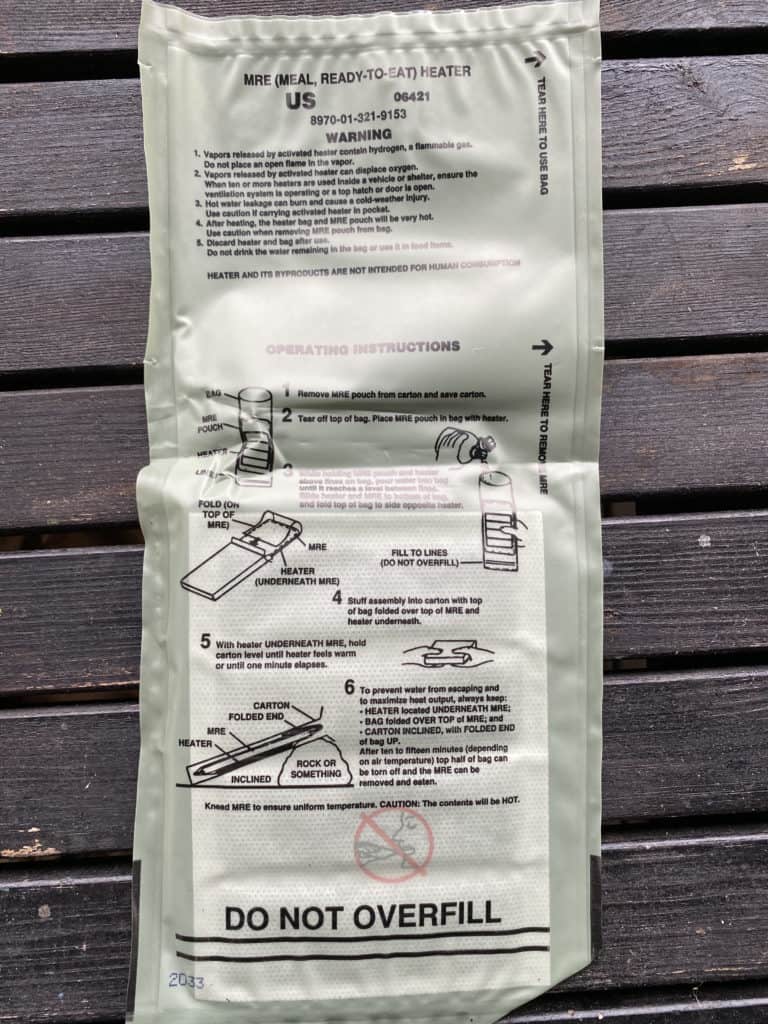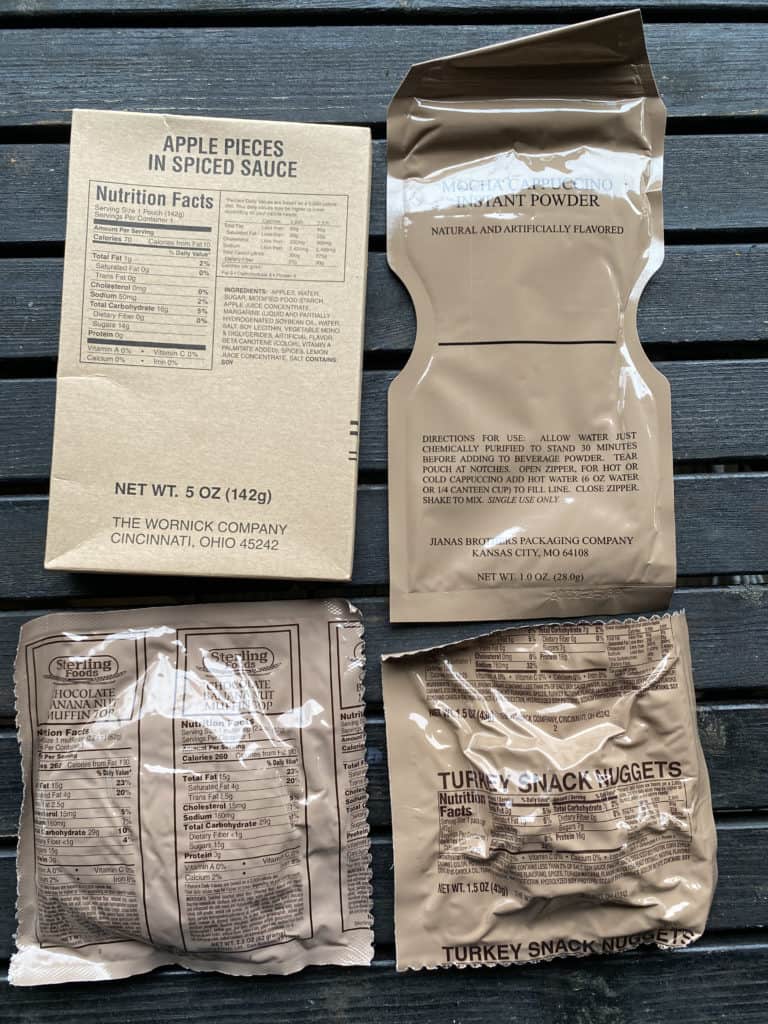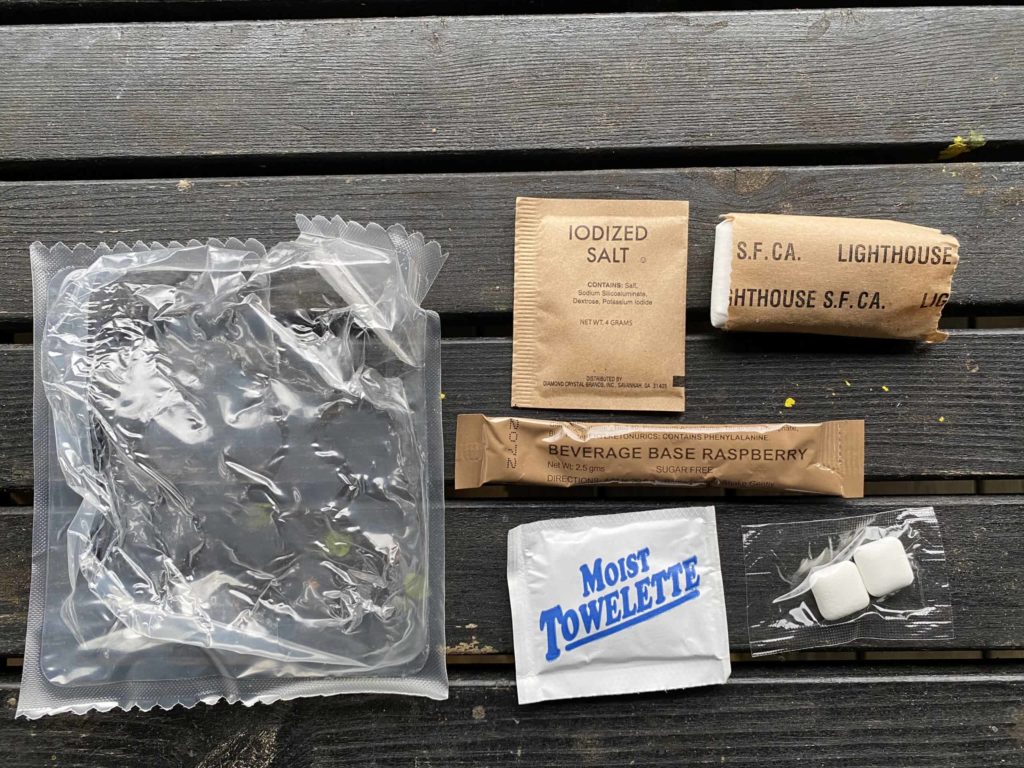MREs, or meals-ready-to-eat, are field rations made by the US Department of Defense for soldiers to eat in combat or training. As such, they are meant to be compact yet hearty, shelf stable and long-lasting, nutritious and familiar. Many come with a self-heating unit which allows soldiers to enjoy a HEATED meal in the field for extra comfort.

There are some very specific parameters for the production of these MREs: they need to be able to withstand both high and low temperatures (think deserts and mountains) as well as high altitudes for paratroopers. They are normally packaged in durable, brown or green plastic for both camouflage and durability.
Many rations contain just a single meal. But there are also special rations made to cover an entire day in the field — these are called 24-hour rations. There are also rations made specifically for cold weather, or for vegetarians, or for special religious groups with dietary restrictions.
And, of course, MREs are not limited to the U.S. Any country who has an army will have ration packs for their soldiers. I’ve tried rations from many countries, most notably Japan, Poland, Turkey, and Great Britain.
So What’s in a Military Ration?
First of all, a meal, along with a dessert, some snacks, some drinks, and accessories. The ration pictured below is a U.S. Menu 24: Southwest Beef and Black Beans.




The meal, Menu 24: Southwest style beef and black beans, comes with tortillas and a jalapeño cheese spread, as well as snacks and a dessert.
To heat the meal, most rations come with a heating component — in this case a flameless heater with clear, easy-to-read instructions printed on the outside of the bag. For this particular heating element, you fill the bag partially with water which activates a sealed chemical.

The ration also comes with a snack or snacks, a dessert, and a hot drink. In this particular ration there were apple pieces and turkey nuggets for snacks, and a chocolate-banana muffin for dessert as well as an instant cappuccino powder for a hot beverage to go with the meal.

Finally, rations invariably come with an accessories pack, featuring a beverage base powder to replenish electrolytes, moist towelettes, chewing gum, and salt.

What Do Rations Taste Like?
Just like in home cooking or in restaurant meals or instant ramens, there is a range in both taste and quality. Some of the better meals-ready-to-eat that I have had have come from Japan and Poland.
In general though, caloric density takes precedence over taste. And shelf stability and longevity take precedence over finesse and presentation.
Obviously you’re not going to have fresh fruits and vegetables in a ration pack. You’re not going to have anything that could go rancid like loose nuts or raw cheese. And you’re not going to have anything that weighs your pack down, like watery beverages or whole meats.
Having said that, some of the stews and curries in ration packs are quite good. However, the breads and crackers tend to be quite dry and heavy for some of the reasons mentioned above.
Can I Make My MRE Fancy?
Yes!! If you’re not planning on going out into the field anytime soon, you can turn your military-issued ration into a three-course meal.
For my experiment, I took the MRE meal #7, beef brisket, and turned it into a savory French puff pastry called a pithivier.
I then took the au gratin, or scalloped potatoes and turned them into a pommes anna, or a potato galette, which sounds fancy, but is basically thinly sliced potatoes arranged in a beautiful pattern, like a rosette which is then fried up with lots of butter (or traditionally duck fat) to get a wonderful, crispy galette.
With the wheat snack bread, instant coffee powder, and peanut butter, I was able to make a layered tiramisu dessert.
You can watch me make my wildly irrational 3-course meal below:
And you can watch all 48 of my Military Ration taste tests here.
Happy adventuring, lovelies!
Would love to watch a playlist of videos of you eating things you liked the least.
For examples, your reaction to the tootsie roll and peanut butter here, your reaction to the durian when you talked about how if you can get past your ideas about onion flavor in fruit.
Basically just those episodes where you’ve been positive about your least favorite flavors. Thank you!